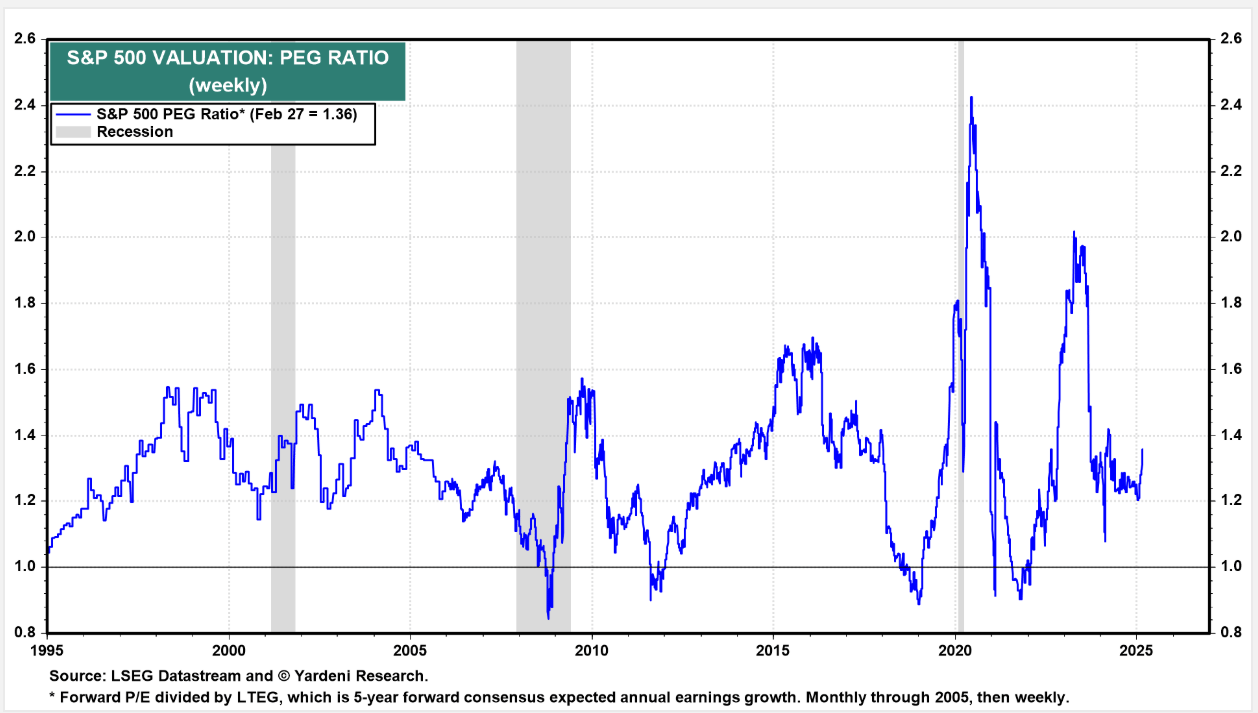- The Wealth Expedition
- Posts
- Overcoming the Habit of Drifting
Overcoming the Habit of Drifting
Napoleon Hill, author of Think and Grow Rich, believed that "drifting" was the greatest obstacle to success. What does it mean to drift, and how do we overcome it?

Our weekly newsletter features the following sections:
First time reading? Subscribe for weekly content here.
“There is one quality which one must possess to win, and that is definiteness of purpose, the knowledge of what one wants, and a burning desire to possess it.”
-Think and Grow Rich by Napoleon Hill
QUICK NOTE TO YOU
Last week, I noticed several of my readers received the email in their spam folder.
If this applies to you, feel free to follow these steps to avoid the spam folder in the future.
Move the email to your primary inbox.
Add [email protected] to your contact list.
For Gmail users, you can also use filters to keep emails out of spam.
Hope this is helpful!

NEWS
What Happened Last Week
Tariffs of 25% on Canada and Mexico went forward on Tuesday, but tariffs on certain imports covered under the 2020 trade agreement were then suspended on Thursday until April 2 to offer additional time for each country to crack down on the fentanyl smuggling across the US border.
To get ahead of the tariffs, US imports dramatically increased far above exports in a way which was not anticipated by forecasts. Net exports (exports minus imports) for January were -3.7% instead of the expected -0.41%.
A large part of this increase in imports included gold bars.
China has fallen to the number two spot for biggest exporter to the US, while Mexico has taken first place.
Weekly jobless claims fell 21,000 to 221,000, but overall February unemployment reported higher at 4.1% instead of an expected 4%.
Multiple predictive models show warning signs of potential overvaluation of the US market.
Euro zone inflation continued to slow to 2.4% in February, though it was still a hair above expectations.
President Trump announced a plan to establish a strategic reserve of cryptocurrencies already owned by the US government. It remains unclear how much the government is likely to add to the reserve in the future.
How I See It
When the price of the S&P 500 drops below its 200-day moving average, there is a higher than 50% chance that it will drop over the course of the next day.
On Friday, the S&P 500 closed at $5,770.20, slightly above it’s 200-day moving average at $5,733.10. Today, it has opened below at $5,705.37.
Stocks have entered “pullback” territory (down 5%-10%) since their high point on February 19. This has happened over a matter of less than three weeks.
It’s too early to speculate with precision whether this is a reversal of the trend or a short-term swing, but there are enough red flags developing that could continue to keep markets volatile in the months ahead.
The combination of tariff uncertainty as well as government layoffs are having an impact, though not one likely to affect years into the future.
Tariffs are used as a negotiating tool, one which President Trump is ready and willing (and eager) to drop if he can elicit cooperation on border control.
Government layoffs are unlikely to move the needle much on unemployment, as about 2% of federal workers have been laid off through February. And federal jobs only make up about 2% of the total US employment. A 2% cut of a 2% portion is 0.04%. And several former employees have already found work elsewhere.
So while there is still plenty for investors to worry about, I don’t believe it’s enough yet to cause a recession. We could see negative real GDP growth in Q1 (due to the frontrunning import spike), but not likely due to severe weakness in the economy.
This looks to me like a pullback, or even a correction, is likely this year. A full on bear market? Possible. But I don’t see a recession as a likely outcome right now, and bear markets usually precede a recession by several months.
What I’d like to see is continued sideways movement overall, or a slow uptrend, that results in anything between a 5%-15% return by the end of the year. In my opinion, that would be a reasonable and sustainable outcome with what the current public data shows.

PARADIGM SHIFT
Overcoming the Habit of Drifting
Napoleon Hill (author of Think and Grow Rich), taught that definiteness of purpose is the starting point of all achievement. He believed it was the foundation stone upon which all other success follows.
Defining a major life goal which is both measurable and attainable, and keeping it before your attention on a daily basis, produces a transformative effect in both the short- and the long-term.
Former clinical psychologist and professor Dr. Jordan Peterson has observed that, “You experience positive emotion by noticing that you’re moving toward a goal.”
Interestingly, if movement toward a goal causes positive emotion, then that means it’s not just the attainment of the goal that produces the positive effect. It’s also the little steps that make up the journey.
In Napoleon Hill’s posthumously published work Outwitting the Devil, the greatest weapon against the success of humanity is described as the habit of drifting.
“A drifter is one who permits himself to be influenced and controlled by circumstances outside of his own mind…A drifter is one who accepts whatever life throws in his way without making a protest or putting up a fight. He doesn't know what he wants from life and spends all of his time getting just that. A drifter has lots of opinions, but they are not his own.” (Outwitting the Devil by Napoleon Hill)
So across his various works of authorship, Hill effectively pits the idea of definiteness of purpose against the habit of drifting.
It’s a bit like the way quantum particles work (I’m a big physics enthusiast!).
The electrons that encircle an atom’s nucleus are sort of in a state of being everywhere and nowhere at any given time (described as “superposition”), just a cloud of potential in one sense…that is, until we actually attempt to measure their location. Once we measure the electrons, each electron’s wave function collapses into a definite position. The electron doesn’t have a definite position until a measurement forces it into one.
That’s how I see definiteness of purpose and its relation to success. Without focus that collapses the wave of potential, the cloud of our potential will remain simply possibility.
But we want to turn potential into kinetic energy.
In principle it’s simple.
But I think possibly a major obstacle to goal attainment is that we often set them for such a long timeframe.
Having a 10-year goal doesn’t feel the same as having a 1-3 year goal.
As Dr. Peterson said, not only do we need to move toward a goal, but we also have to recognize that we’ve moved toward the goal in order to experience positive emotion.
Setting those measurable and attainable 1-3 year goals that are in line with your much longer term goal is one of the most powerful things I think you can do for your success.
Three years might seem like a long time, but it’s the positive emotion that the purpose offers day-to-day that keeps us pursuing that thing which we desire. And the micro decisions and habits that are the building blocks of our lives end up guiding us toward that ultimate attainment.


FINANCIAL TOOL
PEG Ratio
You may have heard of the Price-to-Earnings (P/E) Ratio, but some analysts prefer to take this ratio one step further.
The PEG ratio incorporates growth projections to the mix. Technically, it’s the Price/Earnings-to-Growth Ratio. This equation attempts to measure risk-adjusted performance for an investment.
Here’s the formula for those who enjoy detail:
PEG Ratio =
Price/Earnings
Forward Growth Rate
The logic of the equation is this.
Any result less than one, a stock is considered to be undervalued.
Any result greater than one, a stock is considered to be overvalued.
Members of the CFA Institute recently examined the usefulness of this ratio by examining S&P 500 data from 1985 to 2020, using Yardeni Research’s P/E Ratio data (shown below).
The glaringly obvious fact is that a PEG less than 1 is a very rare occurrence.
While buying when the PEG is below 1 may offer some likelihood of positive upside movement, selling when it is above 1 doesn’t offer any clear benefit.
Even different PEG levels, whether low or high, did not give clear and consistent return predictions for future markets.
Sometimes markets did far better with higher PEG ratios, and other times they did far better with lower PEG ratios. And sometimes market returns were fairly equal whether markets were above or below 1 on the PEG ratio.
The conclusion on this matter is that the PEG ratio tends to be more reliable when applied to individual stocks rather than to the stock market as a whole. And, like most financial ratios, it’s not very useful without other supporting data.
Better to be invested through thick and thin rather than wait for the whole stock market PEG ratio to drop below 1.
But if you’re going to use it as a timing tool for the broader stock market, it’s better to use it as a buy signal rather than a sell signal.

HERE’S HOW I CAN HELP
Launch Your Personal Wealth Expedition!
Ready to take control of your financial destiny?
Here are the two foundational courses which will set you on course to radically transform the way you live and work.

This course will lead you step-by-step toward developing your escape plan into a life of comprehensive wealth: time, flexibility, purpose and money.
Each lesson builds upon the last, covering these main topics:
Master high-impact budgeting techniques to create a surplus today.
Develop a plan to become debt-free in record time.
Raise your salary this year.
Use tax strategy to fast-track your goals.
Bridge your way to entrepreneurship.

Whether you're new to investing or a seasoned expert, this course is designed to make anyone a master of what I believe to be the most important investing concepts.
Here's what you'll learn in this course.
The foundational concepts for analyzing the risk and performance of mutual funds and ETFs.
How your goals affect the allocation of your investment portfolio.
How to fine tune the risk factors in your portfolio to weight the odds of success in your favor.
How to identify stages of the market cycle and build your portfolio around it.
How, when and why to hedge against downside risk.
How this all ties together as one comprehensive wealth expedition from ground zero to financial independence.
With investing, it often takes an understanding of just a handful of concepts to make all the difference in your ability to make tremendous wealth over time.
My goal with this course is to offer you what I see as the most important concepts to successful investing, setting you on course to achieve your dream life well in advance of retirement age using simple but powerful habits of finance.


I’d love to hear from you. Let me know what you’d like to see in upcoming newsletters, articles, or a digital course at Contact Us - The Wealth Expedition.

